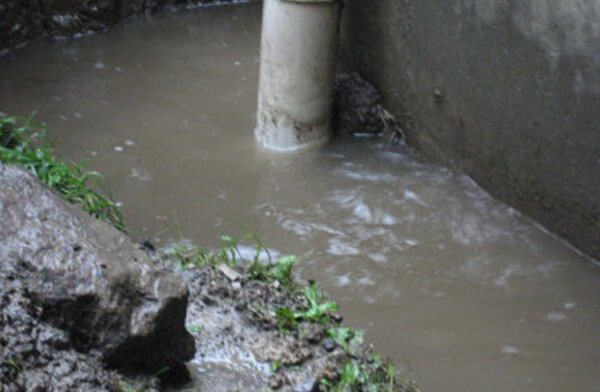6 Ways to Locate Concealed Water Leaks in Your Home
6 Ways to Locate Concealed Water Leaks in Your Home
Blog Article
Just how do you actually feel with regards to Finding hidden leaks?

The minute you discover a leak, calling your plumber for repair work is the best remedy. Nonetheless, some tiny water leaks might not show up. If you can not spot it with your naked eyes, here are some hacks that help.
Early detection of leaking water lines can reduce a possible catastrophe. Apart from saving you money, it will decrease the worry as well as irritation.
Inspect Water Usage
Assess your water costs and track your water usage. As the one paying it, you need to discover if there are any discrepancies. If you find sudden changes, regardless of your usage coinciding, it indicates that you have leaks in your plumbing system. Remember, your water bill need to drop under the exact same range every month. An abrupt spike in your expense indicates a fast-moving leak.
A stable rise every month, also with the very same practices, reveals you have a sluggish leak that's likewise slowly rising. Call a plumber to completely inspect your home, especially if you feel a cozy area on your floor with piping below.
Evaluate and Assess the Situation
Homeowners ought to make it a habit to check under the sink counters as well as also inside cabinets for any type of bad odor or mold and mildew growth. These two warnings show a leak so prompt interest is called for. Doing regular inspections, also bi-annually, can conserve you from a significant problem.
Analyze the Water Meter
Examining it is a proven way that helps you find leaks. If it relocates, that indicates a fast-moving leak. This suggests you may have a slow leak that might also be underground.
Asses Outside Lines
Do not neglect to inspect your outdoor water lines also. Needs to water permeate out of the link, you have a loosened rubber gasket. One little leak can squander heaps of water and also increase your water costs.
Do a Food Coloring Test
When it pertains to water usage, 30% comes from commodes. Test to see if they are running correctly. Drop flecks of food color in the tank and also wait 10 mins. If the color in some way infiltrates your bowl during that time without flushing, there's a leakage between the storage tank and also bowl.
If you understand your residence is currently old, keep a careful eye on your heating units, tubes, pipes and so on. Check for discolorations and weakening as the majority of appliances and also pipes have a life span. They will also naturally weaken due to tear and put on. If you think leaking water lines in your plumbing system, don't wait on it to intensify. Call a professional plumber right now so you do not wind up with a dreadful mess in your house.
The moment you locate a leakage, calling your plumber for repairs is the ideal option. Some tiny water leakages might not be visible. Checking it is a surefire means that aids you find leakages. One little leak can waste bunches of water and also surge your water bill.
If you believe leaking water lines in your plumbing system, do not wait for it to escalate.
How to Know If Your Home Has a Hidden Leak
Water Meter Reveals Inexplicable Water Usage
If you’d like to test whether or not there’s a leak somewhere in your home, you can do this using your water meter. Here is how to conduct the test:
Don’t use any water in your home for at least 30 minutes; this also means not turning on faucets or water-using appliances.
Go outside, and check your water meter for activity.
If your water meter shows that there was activity, even though no one was using any water, this proves that there is a leak in your home.Visible Mold or Mildew Growth
Leaks behind walls create moist, dark environments that allow mold and mildew to grow and thrive. Eventually, you might see mold growth forming on the wall closest to a hidden leak.
If mold is growing in an area that receives a high amount of moisture, such as a bathroom, it may simply be an indication that better ventilation is needed. However, if you see mold growth on a wall or the ceiling in an area where you would not expect, you probably have a hidden leak.
Musty, Mildew Odor
Sometimes you might not be able to see the mold or mildew that is growing as a result of a leak. However, the smell can give the problem away just as easily. If you catch a whiff of something musty, there’s a good chance that old water is collecting somewhere in your home that you can’t see.
Stained/Warped Walls, Ceilings, or Floors
When your home soaks up water, a variety of red flags can become visible, including ceiling stains, bubbling drywall, warped walls, and sagging floors. While these issues can be caused by excess humidity, they can also be signs that a pipe or plumbing connection has started leaking behind your walls.
Inexplicably High Water Bill
After a while, you get a general sense for what your water bill should be. If you own a pool or sprinkler system, your bill will tend to be higher during summer. However, if you receive a water bill that seems especially high, and you can’t figure out what caused it, then you may have a hidden leak somewhere that’s increasing your bill.
https://www.plumbingjoint.com/blog/2019/july/how-to-know-if-your-home-has-a-hidden-leak/

As a devoted reader on Detecting hidden plumbing leaks, I figured sharing that excerpt was a great idea. Feel free to set aside a second to distribute this blog post if you liked it. Thank-you for going through it.
Report this page